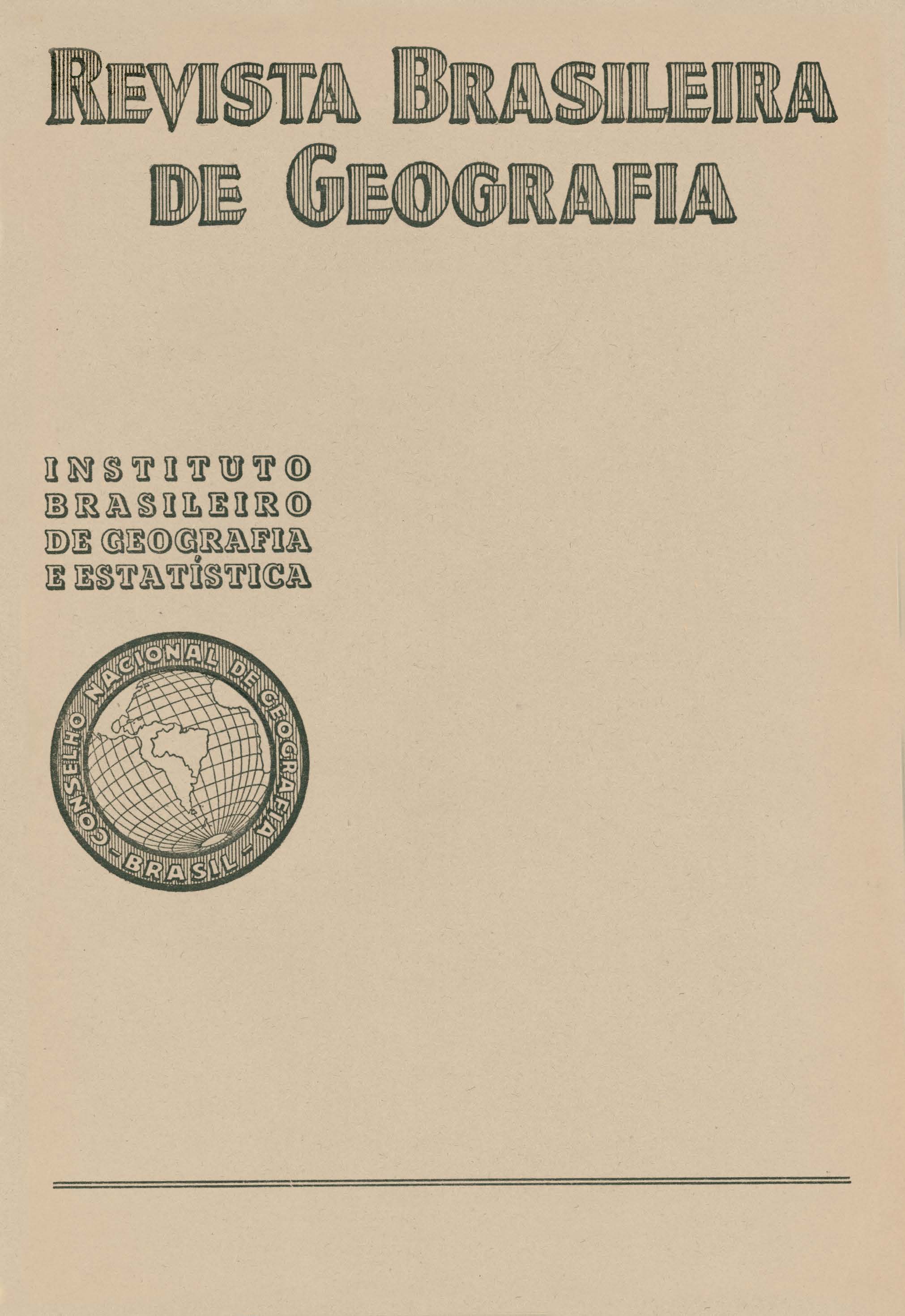Bacia do Alto Paraguai
Abstract
Engineer PEDRO DE Moura, a geologist of the Conselho Nacional do Petroleo, has been working chiefly in the Amazon Valley. Recently, he surveyed Baia and the Noriheast coast as well as the valley of the Alto Paraguay.
In approaching the study of the Alto Paraguay he establishes in this article the geomorphological characteristics of the boundaries of that basin an analysis features of the flat-topped heights of Cuiabá and Parecis and the Maracajú plateaus dividing the Paraguay and Paraná. waters.
He points out the geological and physiographical identity between the Bodoquena· ranges that lie to the sout of the Pantanal (a flooded plain) and those of Araras and Tombador to the north where they look like parallel chains of mountain ranges separated by narrow and
deep valleys with crests defleted to one side or the other in the guise of folds. They are
geologically much older than the flat-topped ridges to the north of Cuiabá and the Maracajú
plateaus: they do most likely belong to the Cambrian period.
The divides of Paraguay and Amazonas and Paraguay-Paranã. are horizontal sandstone
plateaus ending in a scarp towards the basin of Paraguay, and are improperly named "serras"
(ranges).
In this plateau the glyptogenetic process in the plain isolates true evidences which are
locally named "trombas", though many of these are also known as "serras".
Within such boundaries is the great floodplain Pantanal, a marked geographical characteristic of Mato Grosso.
During the season of high waters the Paraguay overflows that vast plain and makes it
look as if an imense lake; i"t is the largest flood area of the South-American continent.
The "pé da serra" (foothill) region safely away from the Pantanal is a true terrace with
several population clusters.
The author next proceeds to consider the Bolivian East. He surveys the physiographic features of the Chiquitano plateau, a notable relief with WNW-ESE general direction and formed by successive elevated flatish areas due to erosive effects sculpturing profiles wich stand out resembling mountains.
Geologically the Chiquitano plateau consists of rudimentary formations wich the author compares with the Parecis sandstone (cretaceous?).
To the South of the plateau lies the extensive chaco territory. This region is unique in
South America. The author dwells long on the analyses of the Chaco as compared with the
Pantanal and quotes descriptions of old naturalists and travellers who concur in stressing
profound differences between the two regions. AZARA was quite fortunate in bis conception
about the two regions and HERBERT SMITH was the first geologist to point out the striking differences which separates them.
In so far as vegetation is concerned the palm tree "carandá" characterizes the boundary line of the Pantanal with the Chaco.
The author finally analyses the historical pathways and courses leading to the Alto
Paraguay region and focuses the important rôle of the means of transportation for the South of
Mato Grosso, integrating that immense area with the national community






